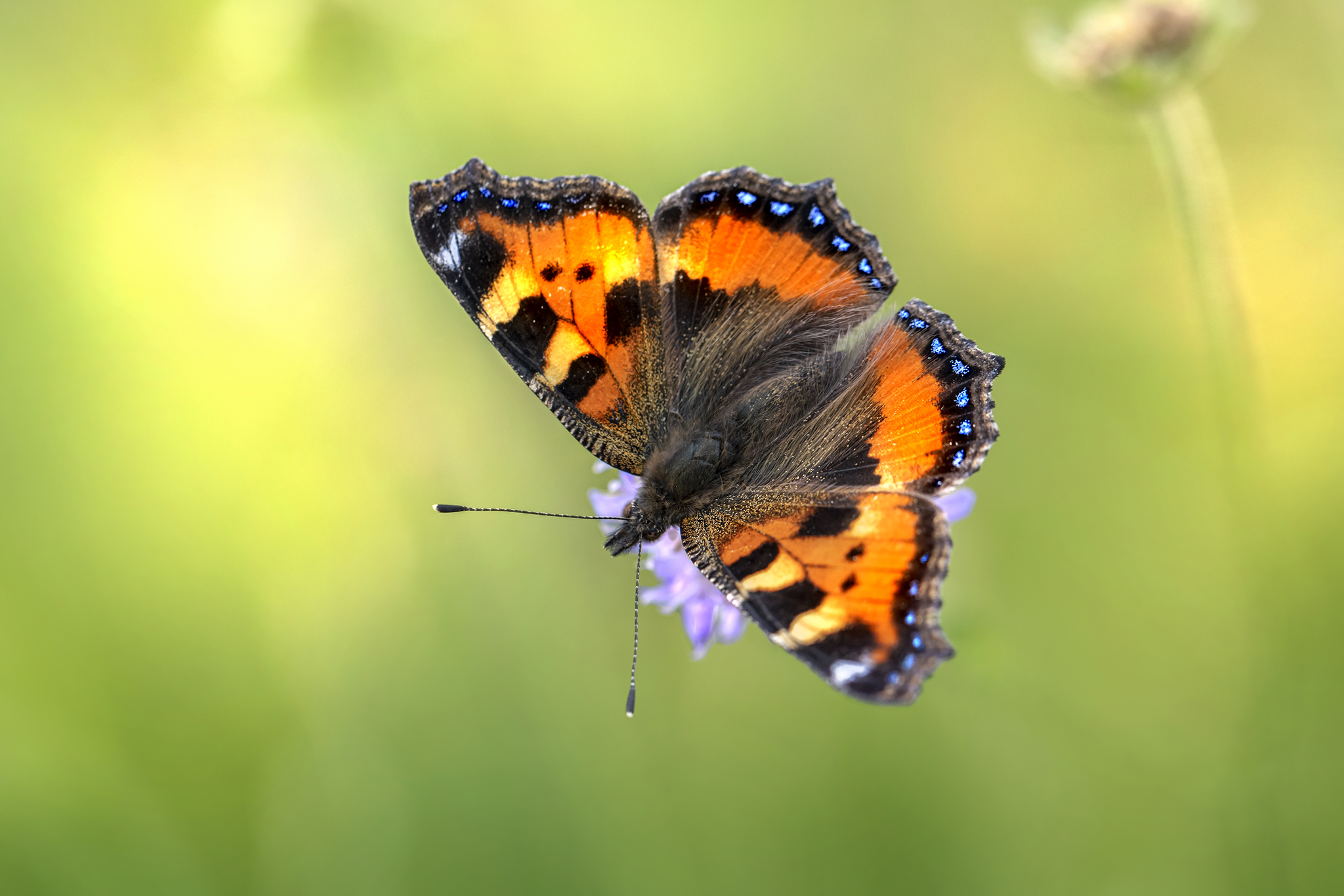The Small Tortoiseshell (Aglais urticae) is a charming butterfly species belonging to the family Nymphalidae, known for its striking appearance and widespread distribution across Europe and parts of Asia. Here’s a detailed description:
Physical Characteristics: The Small Tortoiseshell butterfly is of medium size, with a wingspan typically ranging from 45 to 55 millimeters. It displays a distinctive pattern of bright orange wings bordered by a black band with white spots. The forewings also feature a row of blue crescents near the outer edge, while the hindwings have a series of blue spots and a border of black and yellow. The undersides of the wings are mottled brown, providing effective camouflage when the butterfly is at rest.
Habitat and Distribution: Small Tortoiseshell butterflies are commonly found in a variety of habitats, including meadows, grasslands, woodlands, gardens, and urban areas. They are distributed across much of Europe, including the British Isles, Scandinavia, and the Mediterranean region, as well as parts of Asia, such as Siberia, Central Asia, and the Middle East. They are particularly abundant in temperate regions with diverse plant species.
Behavior and Life Cycle: Small Tortoiseshell butterflies are diurnal and active during the warmer months of the year, especially in spring and summer. They are strong and agile flyers, often seen fluttering among flowers in search of nectar and mates. The females lay eggs singly on the leaves of stinging nettles (Urtica spp.), which serve as the primary larval host plant. The caterpillars hatch from the eggs and feed on the leaves of the host plants before pupating and emerging as adult butterflies.
Conservation Status: The Small Tortoiseshell is not considered globally threatened and is generally common and widespread throughout its range. However, like many butterfly species, it may face localized threats due to habitat loss, fragmentation, and degradation caused by agricultural intensification, urbanization, and climate change. Conservation efforts focused on preserving and restoring habitats, protecting larval host plants, and minimizing human disturbance are crucial for ensuring the long-term survival of this iconic butterfly species.
Overall, the Small Tortoiseshell butterfly is a beautiful and ecologically important species, valued for its striking appearance, graceful flight, and role in pollination and ecosystem functioning. Its presence adds vibrancy and vitality to natural landscapes and serves as a symbol of the rich biodiversity of the regions where it is found.
Views: 315
Subscribe to the newsletter:
